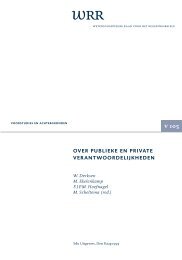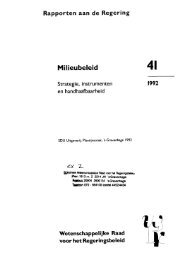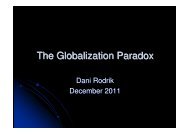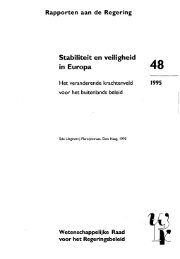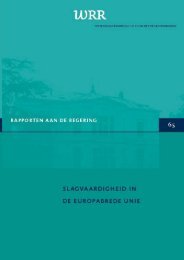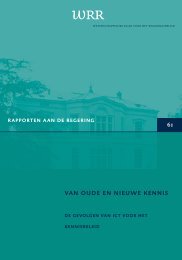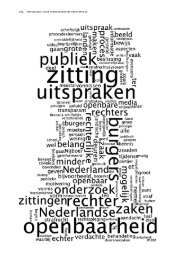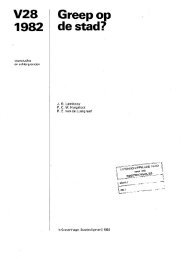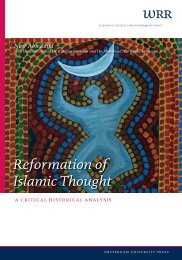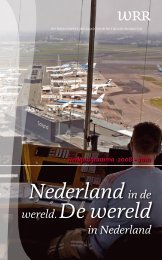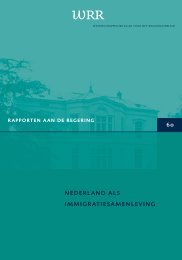Making Migration Work - Wetenschappelijke Raad voor het ...
Making Migration Work - Wetenschappelijke Raad voor het ...
Making Migration Work - Wetenschappelijke Raad voor het ...
- No tags were found...
Create successful ePaper yourself
Turn your PDF publications into a flip-book with our unique Google optimized e-Paper software.
8 making migration workThe present publication considers how we can improve how labour migrationis managed, a question of undiminished importance despite the current economiccrisis and rising unemployment rate. After all, labour migration depends onmany other factors. Because other countries also wish to improve their policies,the editors of this book have consulted a number of internationally renownedresearchers. The first contribution is by Demetrios Papademetriou, President ofthe Washington dc-based <strong>Migration</strong> Policy Institute, who regards the dwindlingsize of the labour force as one of the key problems of the twenty-firstcen tury. In Chapter 2 he argues that migration is one way to solve this problem.Encouraging more migration requires intelligent preparation both by the authoritiesand by businesses and civil society organisations. One particular issueis how to attract highly skilled workers from outside the eu. The eu MemberStates will have to do much more than they have done so far to compete withthe growing number of countries vying for ‘the best and brightest’.In Chapter 3, George Lemaître of the oecd discusses several ways to identifythe needs of the labour market. He argues that scenarios concerning the impactof ageing on the labour market are unsuitable for that purpose. Labour needsare a much more reliable measure in his view, although it is always necessaryto take the recruitment and hiring process for foreign employees into account.Using Sweden as an example, he argues that opening up the borders will notlead to an uncontrollable inflow of labour migrants if firm agreements are madebetween the social partners. To what extent labour migration should be allowedis ultimately a labour market issue, in Lemaître’s opinion.Martin Ruhs and Bridget Anderson share his view. They also note in Chapter4 that the demand for labour migrants cannot be measured objectively. Theyargue that employer demand should be viewed with caution. One contingentfactor is that the choices employers have are critically influenced by training,education and labour market regulatory policy. In the opinion of Ruhs andAn derson, w<strong>het</strong>her the eu Member States can alleviate labour shortages byat tracting more labour migrants, paying higher wages or experimenting withother options is necessarily a political issue that requires a balancing of conflictinginterests. The process of balancing those interests should be part of a muchwider public debate that also considers which social and economic model wewish to apply in future.In Chapter 5, Béla Galgóczi and Janine Leschke look at the free movement ofworkers within the European Union, which increased considerably in scale afterthe 2004 and 2007 enlargements. European migration patterns were heavilyinfluenced by the transitional measures that were applied, their duration, andby the economic crisis. Both authors are concerned about the huge mismatch



